Understanding Bonaire Snorkeling
Let me tell you, Bonaire snorkeling is unlike anywhere else in the world. It’s like slipping into a natural aquarium, where every turn brings you face-to-face with something more dazzling than the last. I remember floating just beneath the surface, feeling as if I were in a hidden realm known only to the sea creatures themselves.
One of the magical parts of snorkeling in Bonaire is how close everything feels. You barely have to kick, and you’re already surrounded by schools of vibrant fish, corals that seem to sway with your presence, and the occasional sea turtle lazily drifting by, unaware of its beauty.
The water is so clear that it almost feels like air, allowing you to see every detail below. You’ll notice the reef isn’t just alive – it’s thriving. The colors of the coral are almost neon, glowing in the sunlight that filters down in soft beams. Trust me, it’s mesmerizing.
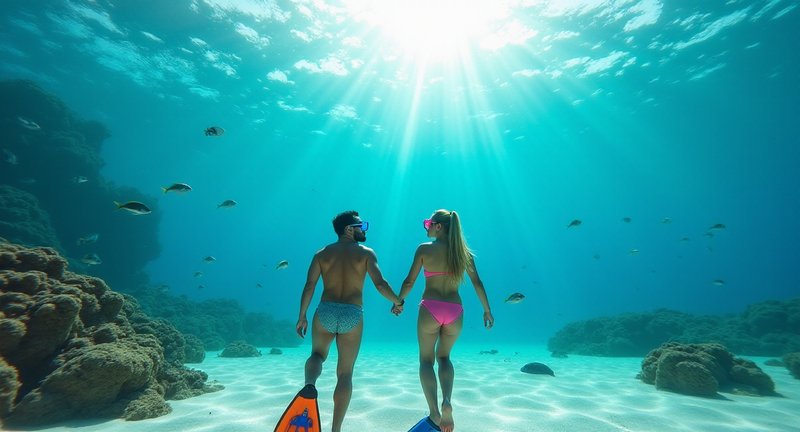
There’s a stillness in Bonaire’s waters that you don’t get in many other places. No big waves, no noisy distractions – just you, the marine life, and the gentle rhythm of the ocean. It’s easy to lose track of time here, and before you know it, you’ve been floating for hours, entranced by the underwater world.
I always tell anyone who’s headed to Bonaire: bring a mask, snorkel, and a sense of wonder. You won’t need much else.
The Joys of Bonaire Snorkeling
There’s something truly magical about the waters of this island. Imagine gliding effortlessly over vibrant coral gardens, each more colorful than the last, all while feeling like you’ve been transported into another world. Trust me, once you’re out there, time seems to slip away with the current.
One thing I’ve come to love is how accessible it all is. You don’t need to be a diving pro or rent a boat to explore the underwater treasures. Just grab your mask and fins, and you’re good to go. Some of the best spots are mere steps from the shore.
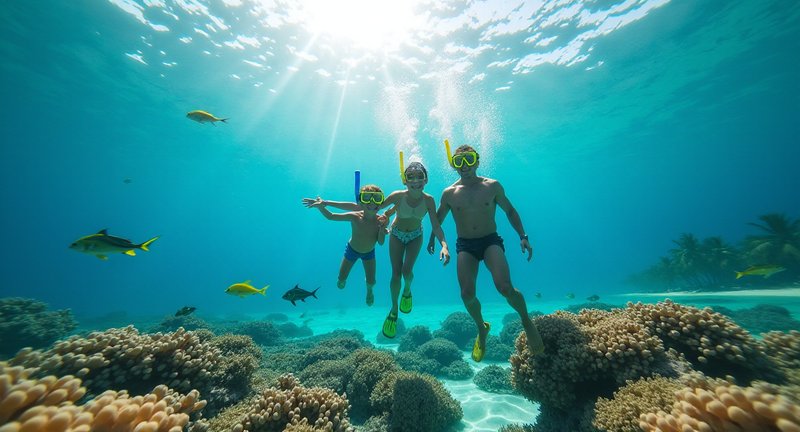
Here’s what I recommend for making the most of it:
- Explore different spots: The west coast offers endless locations, but don’t just settle for the first one. Each beach has its own character, from shallow seagrass meadows to rocky drop-offs that seem to disappear into the deep.
- Take your time: Don’t rush. You’ll see more if you float and let the fish come to you. Plus, that slow pace allows you to appreciate the details tiny, shy creatures hiding in the corals or playful parrotfish nibbling away at algae.
- Pack smart: Water shoes are a must; the rocky entries can be tough on bare feet. And trust me, sunscreen will become your best friend reef-safe, of course, to protect this underwater paradise.
No matter how many times I’ve been, I still find myself blown away by the underwater life. It’s like stepping into a living aquarium, one that never fails to surprise and enchant. If you’ve ever wanted to feel like you’ve wandered into nature’s hidden gem, this is the place to do it.
Introduction to Bonaire’s Underwater Wonders
There’s something magical about slipping beneath the surface of the waters off Bonaire. The island, known for its world-class diving spots, is also a hidden treasure trove for those who prefer a more relaxed exploration. I still remember my first encounter with its crystalline waters like entering another world where every shade of blue and green shimmered together in perfect harmony.
The reef system here is alive with vibrant corals, like undersea gardens that stretch as far as the eye can see. I’ve seen creatures here that you wouldn’t even imagine existed tiny, neon-colored fish darting in and out of coral crevices, and larger, more majestic species that glide by as if they own the sea. You never know what you’ll come across, and that’s part of the adventure.
Bonaire’s waters are uniquely gentle, making them ideal for both the seasoned explorer and the curious first-timer. I’ve found myself floating effortlessly over coral heads, mesmerized by the delicate balance of life beneath me. It’s a dance of color and movement that never gets old.
What sets this place apart, though, is the sense of peace it brings. The island’s commitment to conservation has preserved the reefs and sea life in ways that many places can only dream of. When you’re out there, it’s just you, the water, and nature no distractions, no noise.
Every time I leave, I feel a bit like I’ve been part of something ancient, something that will still be here long after we’re gone. The underwater world of Bonaire feels timeless, and once you’ve experienced it, a part of you stays there.
Why Bonaire is a Snorkeler’s Dream
Imagine floating effortlessly in crystal-clear water, just beneath the surface, as an entire world unfolds before your eyes. That’s Bonaire. For anyone who loves the ocean, this island is an absolute paradise. But what makes it so special for us snorkelers? Let me break it down.
-
Shore Access: Unlike many spots where you need to hop on a boat, in Bonaire, you can simply walk off the beach and into a vibrant marine ecosystem. It’s incredibly freeing to know that you don’t have to schedule a tour just grab your gear and head out whenever the mood strikes.
-
Calm, Warm Waters: The sea around Bonaire feels like a natural swimming pool. The gentle currents and mild temperatures make for a laid-back experience, allowing you to truly enjoy the colorful sea life at your own pace. No rushing to keep up with the tide here.
-
Endless Coral Reefs: Picture this: bright corals in shades of pink, orange, and purple stretch as far as you can see. It’s like wandering through an underwater garden, with sea turtles and parrotfish for company.
-
Conservation Mindset: Bonaire takes protecting its marine life seriously. The local commitment to preserving these waters ensures that every visit feels like stepping into a pristine, untouched wonderland. You’ll see marine creatures in their natural habitat, undisturbed by human interference.
Whether you’re a seasoned pro or a complete beginner, Bonaire offers an underwater experience that’s hard to find anywhere else. And trust me, after one visit, you’ll want to come back for more.
Best Time of Year for Water Adventures
The rhythm of water changes with the seasons, and timing your adventures just right can make all the difference. Trust me, I’ve seen too many people miss out on that perfect harmony between wind, sun, and sea. If you’re eyeing the tropics, the warm embrace of late spring and early autumn is unbeatable.
These months hold a magic long days that stretch endlessly, seas that shimmer like liquid glass, and breezes that whisper just enough to cool your skin without a stormy surprise. It’s the calm before the stormy hurricane season, but not too close to its tail, leaving room for pure aquatic bliss.
If you’re chasing thrills, like jet-skiing or kite-surfing, late summer is your best friend. That’s when the winds pick up just enough to give you that adrenaline rush without throwing you off balance. Plus, crowds thin out as vacationers head home, leaving you with open water to carve your own path.
Don’t forget that the northern hemisphere’s winter is the southern hemisphere’s summer. While you’re bundling up at home, the water down south is begging to be explored, and trust me, there’s nothing like feeling sun-warmed sand underfoot in January.
So, whether you’re gliding through quiet lagoons or battling waves on the high seas, plan wisely. The perfect time can turn a good trip into an unforgettable one.
Essential Gear for Snorkeling in the Caribbean
When you’re preparing to dive into the clear blue waters of the Caribbean, having the right gear for snorkeling can make all the difference. Trust me, I’ve been there. Whether you’re floating above a coral garden or weaving through a school of vibrant fish, your experience is only as good as the tools you bring along.
First up, your mask. This isn’t just a piece of equipment; it’s your window to the underwater world. A well-fitting mask will keep the saltwater out and the sights crystal-clear. Make sure you test it before your trip nothing worse than constantly adjusting your mask mid-dive!
Next, a quality snorkel. I know it sounds simple, but a dry snorkel is a lifesaver. No more choking on rogue waves. Choose one with a purge valve to easily clear out any water that sneaks in.
Don’t forget your fins! Comfortable, lightweight fins will let you glide effortlessly without tiring out too quickly. A lot of people skip these, but if you’re aiming to explore larger areas, fins are the difference between a leisurely swim and a full-body workout.
Also, consider a rash guard or lightweight wetsuit. Even in warm waters, you’ll want protection from the sun, sharp corals, and the occasional jellyfish.
Quick checklist:
- Snug, leak-proof mask
- Dry snorkel with a purge valve
- Comfortable, flexible fins
- UV-protective rash guard or lightweight wetsuit
So, when you’re heading to those turquoise Caribbean waters, be sure to gear up with these essentials. Trust me, you’ll thank yourself when you’re out there, face to face with the vibrant marine life.
Top Snorkeling Spots in Bonaire
With regard to finding some of the best underwater landscapes, Bonaire Snorkeling tops the charts. I’ve explored reefs all around the Caribbean, but the crystal-clear waters and vibrant marine life of Bonaire offer something extraordinary. Whether you’re a seasoned snorkeler or a curious newbie, Bonaire has a spot for you. Here are a few must-see locations that should be on your snorkel bucket list:
-
1000 Steps: Despite the name, don’t worry you only need to climb about 67 steps down! This spot is perfect if you’re looking for dramatic coral formations. It’s like an underwater jungle where parrotfish and angelfish make their rounds.
-
Klein Bonaire: A small uninhabited island just a short boat ride from the mainland, this place feels like a secret getaway. The reef here is shallow, colorful, and brimming with life. You’ll swim among rainbow-colored corals and catch sight of graceful sea turtles.
-
Sorobon Beach: Located on the east side of Bonaire, this spot gives you a taste of lagoon life. It’s great for those who prefer calmer waters, as you’re shielded from the bigger waves by a long barrier reef. Stingrays love to glide gracefully through these waters.
Each spot brings its own unique touch, but the one constant is that Snorkeling adventures in bonaire will leave you in awe. Imagine floating over vibrant coral, spotting elusive sea creatures, and feeling utterly immersed in this underwater paradise. It’s not just about seeing the ocean it’s about feeling like a part of it.
Marine Life to Look Out For
When you’re exploring the crystalline waters of Bonaire, it feels like stepping into a vibrant underwater world. There’s something almost magical about the marine life here that draws you in, and trust me, it’s not just the colorful fish. Let me give you a little heads-up on what creatures might be gliding past you during your aquatic adventures.
First, keep your eyes peeled for sea turtles. These graceful creatures float along as if they have no cares in the world. You might spot a few species like the hawksbill or green turtle, slowly paddling near the reefs. There’s a certain peacefulness to watching them glide by it’s like nature’s meditation.
Then, there’s the star of the show for many divers the eagle ray. I’ve seen a few on my visits, and their sheer size paired with their gentle, flowing movements is absolutely mesmerizing. With their wings spanning out like underwater birds, you can almost lose yourself watching their dance in the deep.
For those who love tiny wonders, Bonaire is also home to vibrant, curious little creatures. Look closely among the corals, and you might find some hidden gems like the seahorse or the spotted drum. The way these small beings move is captivating, like a mini-ballet playing out in slow motion.
And let’s not forget about the reef sharks. Now, don’t be alarmed they’re more curious than dangerous. Spotting one of these sleek, misunderstood predators is an unforgettable experience. It’s a rare, heart-thumping moment that you’ll carry with you long after you leave the island.
Here’s a quick recap of marine life to look out for:
- Sea turtles (hawksbill, green)
- Eagle rays
- Seahorses and spotted drums
- Reef sharks
So next time you’re in these waters, keep your mask clear and your sense of wonder open you never know what might swim by.
Tips for Beginners: Safety and Technique
When you’re just starting out with snorkeling, it can feel a little daunting. I’ve been there floating above a world that’s alive beneath the water’s surface can feel magical and overwhelming all at once. So let’s talk safety and technique, because trust me, getting these right will make your first few snorkel adventures much smoother.
Safety First
You’re about to explore a whole new environment, so safety isn’t something to skip. Here are a few tips to keep in mind:
-
Check your gear: Test your mask, snorkel, and fins before you dive in. Make sure your mask fits snugly but not too tight, and your fins feel secure. You don’t want any surprises while you’re in the water.
-
Stay aware of currents: Always check the water conditions before heading out. Currents can change quickly, so stick to areas with calmer waters when you’re a beginner.
-
Buddy up: Never snorkel alone. Not only is it safer to have someone by your side, but sharing those underwater moments makes the experience richer.
-
Hydrate and apply sunscreen: Sun exposure sneaks up on you when you’re floating on the surface, so don’t forget to protect your skin and drink plenty of water.
Technique Matters
Snorkeling is easy once you get the hang of it, but there are a few key tricks:
-
Breathe slow and steady: Don’t rush your breathing. A slow, even rhythm will keep you calm and conserve your energy.
-
Float, don’t fight: Let the water do most of the work. Relax and let yourself float; don’t kick too hard or you’ll wear yourself out fast.
-
Use your fins wisely: Small, controlled kicks are more efficient than big, splashy ones. Think of your legs as paddles, not propellers.
By following these simple guidelines, you’ll be setting yourself up for a smooth and enjoyable snorkeling journey. Now, get out there and start exploring!
Eco-Friendly Practices While Exploring
Concerning eco-friendly travel, we don’t need to reinvent the wheel; we just need to be more mindful of our choices. From my own travels, I’ve picked up a few habits that not only help protect the environment but also make the journey more enriching.
One thing I’ve learned is the power of small, thoughtful actions. Simple swaps can make a huge difference. For instance:
-
Reusable items are game-changers: Pack a collapsible water bottle, bamboo cutlery, and even a small reusable shopping bag. It’s surprising how much single-use plastic you’ll avoid with these essentials.
-
Support local economies mindfully: When choosing souvenirs, consider locally crafted items. Not only are they usually more unique, but buying them supports local artisans rather than mass production.
-
Choose eco-conscious accommodations: Opt for hotels and lodges that prioritize sustainability. Look for places that actively reduce their water usage, offer eco-friendly toiletries, and have recycling programs. Some even have energy-efficient lighting or use solar power.
-
Tread lightly: Be aware of the delicate ecosystems you’re visiting. Whether you’re hiking through lush forests or swimming in crystal-clear waters, avoid touching or disturbing wildlife, and stick to marked trails.
And here’s a fun tip – travel slow. I’ve found that slowing down not only reduces my carbon footprint (think fewer flights, more trains or biking) but also allows me to connect deeper with the places I’m visiting.
By making these eco-friendly choices, your travels can become more than just an adventure. They can be part of a broader commitment to preserving the planet we all love exploring. So next time you pack your bags, remember – the journey isn’t just about where you go, it’s about how you choose to get there.
The Key Insights on Bonaire Snorkeling
There’s something magical about slipping beneath the surface of those crystal-clear Caribbean waters. It’s a place where the world above simply disappears, leaving you surrounded by vibrant marine life.
I remember my first dip; I wasn’t prepared for the explosion of colors. Schools of fish shimmer like underwater rainbows, and the coral, well, it’s a living masterpiece. You can’t help but get lost in the beauty of it all.
The island’s shores offer easy access to these hidden wonders. No boat required just step into the water and you’re in a whole new world. It’s like a treasure chest of natural beauty just waiting to be opened.
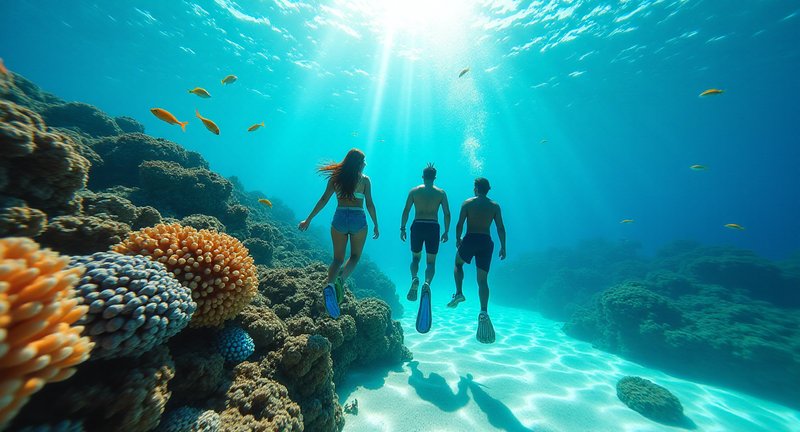
What struck me most was the calmness of the water. It’s not often you get to explore such rich underwater landscapes without battling waves or strong currents. It’s as if the sea wants to show you all its secrets.
For the adventurer in you, there are deeper spots where the ocean floor seems to stretch into infinity. Yet even the shallow areas are alive with movement and mystery. Every time I went out, I saw something new, something that took my breath away.
If you’re like me, you’ll find yourself spending hours mesmerized, forgetting the time, caught up in the magic of it all. And when you finally surface, it’s with a full heart and the kind of memories you’ll carry with you forever.
Guided Tours vs. Self-Exploration
When dealing with travel, the debate between guided tours and self-exploration is a never-ending one. Both have their unique flavor. For those who enjoy a structured approach, guided tours offer a curated experience. You’re led through every corner, every highlight, by an expert who fills your mind with stories you’d likely miss on your own.
But I’ll tell you, there’s something magical about getting lost on your own terms. Sure, there’s the chance of missing a turn or two, but that’s part of the adventure. Self-exploration lets you own the journey. There’s a particular charm in wandering with a loose plan, open to whatever the day throws at you.
Guided tours can make you feel like you’re in the hands of a historian, someone who knows the destination better than you know your own neighborhood. The layers of knowledge and insights are spoon-fed, which can be comforting. You just show up, listen, and marvel.
Yet, when I venture out without a guide, it feels like the destination is a blank canvas waiting for me to paint my own experiences. No itinerary to follow, just the rhythm of my curiosity. I’ve stumbled upon hidden gems that never made it into any brochure, and those moments feel like secret victories.
In the end, it boils down to what kind of traveler you are. Do you prefer being the passenger or the driver of your own adventure? It’s a choice only you can make, but I’ve found joy in both – depending on the day.
Local Regulations and Conservation Efforts
As someone who has spent a lot of time exploring tropical havens, I’ve come to appreciate the delicate balance between tourism and the protection of local ecosystems. It’s no surprise that many places have put stringent regulations in place, all in the name of conservation. The waters of Bonaire are no exception. They’ve adopted measures to preserve the underwater world, ensuring that the island’s biodiversity remains intact.
One thing that stands out is how seriously they take protecting marine life. Local authorities enforce strict guidelines, often going beyond what many travelers are used to. It’s not just about following the rules, but about understanding the larger impact. Every step taken by both visitors and locals matters in keeping these underwater environments pristine.
What makes Bonaire particularly unique is how deeply ingrained these conservation efforts are in their culture. It’s not just lip service; it’s something the community lives and breathes. It’s fascinating to witness how they’ve seamlessly woven these practices into their daily lives and tourism industry. Whether you’re an adventurer or a curious soul, there’s a shared sense of responsibility that you can’t help but feel a part of.
So, if you’re planning a visit, be prepared to play your part. It’s not just about enjoying the breathtaking views, but about becoming a steward of the sea. Trust me, the experience becomes even more rewarding when you know you’re helping preserve it for future generations.
Accommodations Near Prime Snorkeling Areas
When planning a snorkeling trip, the search for the perfect accommodation becomes more than just finding a bed to sleep in. It’s about proximity, atmosphere, and those little surprises that make the experience memorable. I’ve stayed in places where the ocean was practically whispering through my window, and trust me, that makes a world of difference when you’re eager to dive in at sunrise.
One thing I always consider is how quickly I can get from my doorstep to the reef. Whether it’s a cozy bungalow nestled right along the coast or a charming guesthouse a short walk away, being close to the action matters. Even better are those hidden spots that offer a mix of local charm and direct beach access – the kind of places you almost don’t want to leave.
And let’s not forget about the vibe. There’s something magical about staying in a small, family-run place where they know all the best spots and secret coves. These hosts often share not only their homes but also insider tips on avoiding the crowds or finding the most colorful coral.
Also, I always look for accommodations with on-site gear rentals. It’s a hassle-free way to grab what you need, slip into the water, and start exploring without lugging around your own equipment. Convenience and comfort can transform a good trip into a great one.
Dining Options for Hungry Adventurers
When you’re out exploring the wild, scaling mountains, or paddling across pristine waters, you need sustenance that keeps up with your adventurous spirit. From personal experience, I’ve learned that dining on the go is an art in itself, and I’m here to share some tasty tips to help fuel your journey.
Fast Bites for Fast-Paced Days
Let’s face it, sometimes we don’t have the luxury of a sit-down meal. Quick, convenient, yet satisfying options can make all the difference:
- Energy-packed trail mix – Mix up nuts, dried fruit, and a few dark chocolate bits for that sweet-salty boost.
- Protein bars – They’re like the Swiss Army knife of snacks. Compact, filling, and full of energy.
- Wraps – These are my go-to for portable meals. Fill them with veggies, hummus, or leftover grilled chicken.
Local Cuisine for Cultural Immersion
When time allows, I encourage you to dive into the local flavors. It’s one of the best ways to experience a place’s culture. And trust me, nothing beats a meal crafted by local hands:
- Street food stalls – They’re like hidden gems offering rich, authentic tastes. Plus, you’ll likely meet some interesting folks along the way.
- Farm-to-table restaurants – If you’re looking for something sustainable and fresh, seek out spots where ingredients are sourced from nearby farms. These places serve more than food they offer a story with each bite.
Packable Meals for Remote Adventures
For those days when the wilds call and civilization feels miles away, pre-packed meals are your best friend. Here’s what I’ve found handy:
- Freeze-dried meals – Lightweight, easy to rehydrate, and surprisingly tasty.
- Canned goods – A bit heavier, but perfect for a quick meal that requires little to no preparation.
No matter where your adventure takes you, the right food keeps you going strong. Just remember, fuel up wisely, and don’t forget to savor the flavors along the way.
Important Questions
Can you snorkel off the beach in Bonaire?
Yes, you can snorkel directly off the beach in Bonaire. This island is renowned for its abundant marine life, making it one of the premier destinations for shore snorkeling. The easy accessibility of the coral reefs means that you can step right into the water from many beaches and encounter vibrant corals, tropical fish, and other underwater creatures within just a few meters. Popular beach spots for snorkeling include Playa Chikitu, 1000 Steps, and the calm waters of Sorobon Beach.
Is snorkeling better in Curacao or Bonaire?
Both Curacao and Bonaire offer excellent snorkeling opportunities, but Bonaire generally has the edge when it comes to shore snorkeling. Bonaire is a designated marine park, with strict environmental protections that have preserved its coral reefs and marine ecosystems. The reefs are closer to shore and more accessible, meaning you don’t need a boat to find great snorkeling spots. Curacao also has good snorkeling, especially around its coves and bays, but it’s often less accessible directly from the beach compared to Bonaire.
Which Caribbean island has the best snorkeling from shore?
Bonaire is often considered the Caribbean island with the best snorkeling from shore. Its calm, clear waters and proximity to healthy coral reefs make it an ideal destination for both beginners and experienced snorkelers. The island’s entire coastline has been protected as part of the Bonaire National Marine Park, ensuring the preservation of its marine life and corals. With dozens of shore-accessible snorkeling spots, including Klein Bonaire, the island offers unparalleled underwater experiences without the need for boat trips.
Which ABC island is best for snorkeling?
Bonaire is widely regarded as the best of the ABC islands (Aruba, Bonaire, and Curacao) for snorkeling. Its world-renowned marine park and numerous shore-entry sites provide snorkelers with the chance to explore vibrant reefs and observe diverse marine species just meters from the beach. While Aruba and Curacao also have good snorkeling, Bonaire’s emphasis on conservation and its extensive, easily accessible underwater ecosystem put it a step ahead when it comes to snorkeling opportunities.
Do you need a permit to snorkel in Bonaire?
Yes, you do need a permit to snorkel in Bonaire. This is part of the island’s efforts to protect its marine environment through the Bonaire National Marine Park. The permit is required for all water activities, including snorkeling, scuba diving, and windsurfing. The fee helps fund conservation and management efforts to ensure the protection of the reefs and marine life. Permits can be purchased at various dive shops and locations across the island and are valid for one calendar year.
Why is the beach pink in Bonaire?
The pink hue of some beaches in Bonaire, particularly the beaches near the southern salt flats, is caused by tiny pink organisms called foraminifera. These microscopic marine creatures have shells that range in color from red to pink and, when they die, their shells wash ashore and mix with the sand. Over time, the accumulation of these shells gives the beach its distinctive pink color. This phenomenon is especially noticeable around the pink salt pans and flamingo nesting areas.
Why is Bonaire so expensive?
Bonaire can be expensive due to several factors, including its remote location and its focus on sustainable tourism. As an island, many goods need to be imported, which drives up costs. Additionally, Bonaire’s commitment to protecting its environment means that certain regulations and conservation fees are in place, which can also contribute to higher prices. The island caters primarily to a niche market of divers and eco-conscious travelers, which sometimes makes accommodations and services pricier compared to more mainstream Caribbean destinations.
What month is best for Bonaire?
The best time to visit Bonaire is typically between November and April, during the dry season when the weather is sunny and calm. During these months, the water is clear and ideal for snorkeling and diving, with excellent visibility for underwater exploration. While Bonaire is a year-round destination due to its consistent temperatures, the wet season (May to October) can bring occasional rain and rougher waters, although the island is located outside the main hurricane belt, making it less vulnerable to severe storms.
Is Bonaire more expensive than Aruba?
Generally, Bonaire is more expensive than Aruba, particularly when it comes to accommodations and certain services. While Aruba has a more developed tourism industry with a broader range of budget-friendly options, Bonaire’s focus is more on sustainable tourism and catering to niche travelers like divers and eco-tourists, which often means higher prices. However, food and entertainment options can be more affordable in Bonaire compared to Aruba’s high-end resorts and shopping areas.
Can you go snorkeling at the beach?
Yes, snorkeling directly from the beach is one of the main attractions in Bonaire. The island’s coastline is dotted with numerous snorkeling spots where you can easily enter the water and explore the vibrant coral reefs just offshore. Unlike many destinations where you need a boat to reach the reefs, Bonaire’s reefs are close to the shore, making beach snorkeling a convenient and rewarding experience. Popular spots like Klein Bonaire and 1000 Steps are easily accessible and offer stunning underwater views.
Where is the best place to snorkel from the beach?
One of the best places to snorkel from the beach in Bonaire is 1000 Steps. Despite its name, this site is easily accessible and renowned for its clear waters and vibrant coral reefs just a short swim from the shore. Other excellent beach snorkeling spots include Klein Bonaire, a small islet off the coast, and Sorobon Beach, known for its shallow waters and diverse marine life. These locations offer snorkelers the chance to explore Bonaire’s pristine underwater world without the need for a boat.





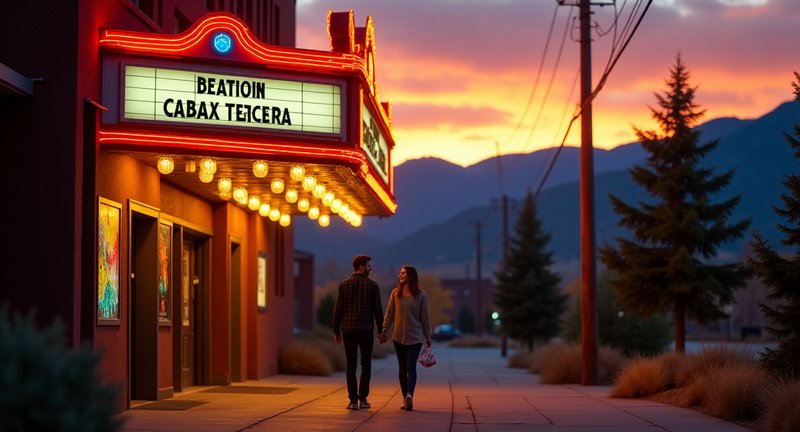
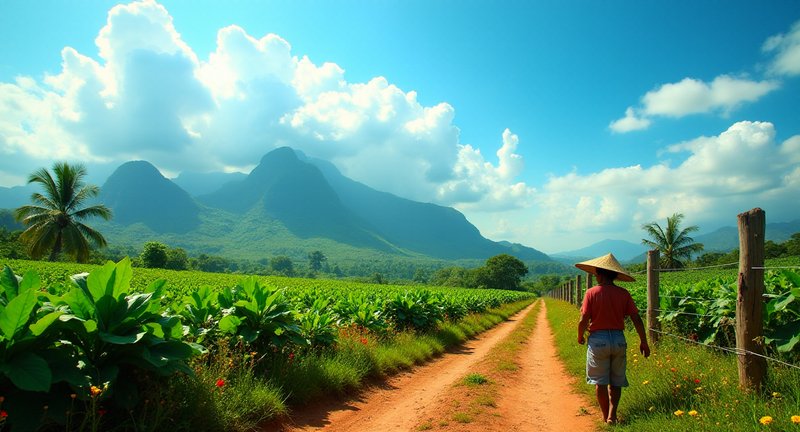
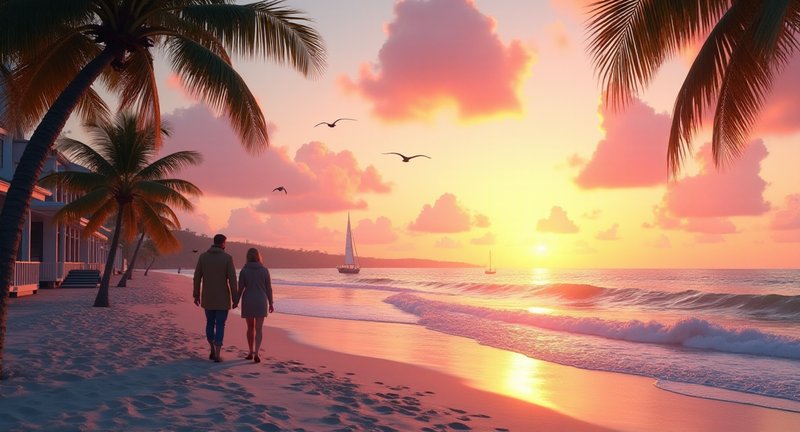
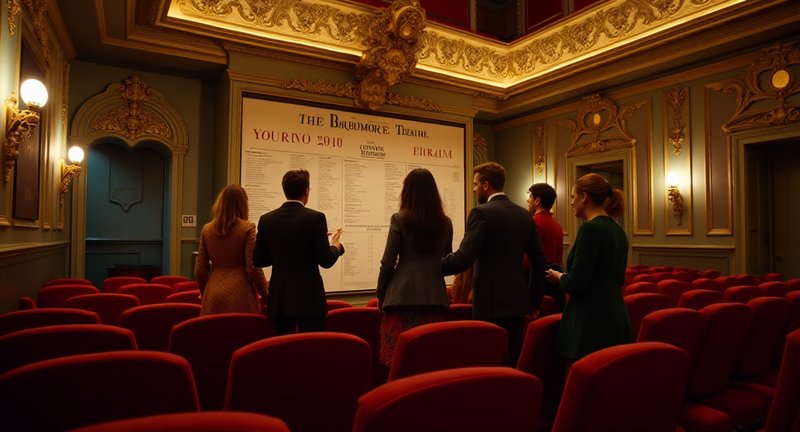

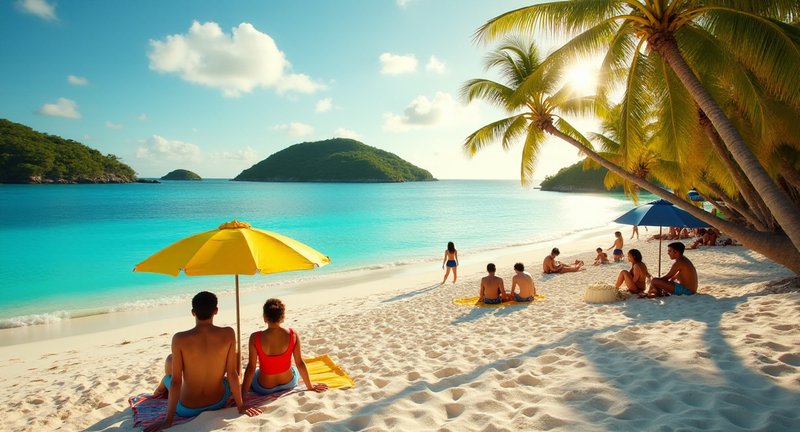
Bonaire truly is a snorkeler’s paradise! I remember my first time at 1000 Steps – I was initially intimidated by the name, but once I realized it was far fewer steps (phew!), it became one of my favorite spots. The underwater world there is unreal! It honestly felt like I was swimming through a vibrant, living museum, with so many unique fish species and coral formations. Klein Bonaire is another gem, especially for a chilled-out, peaceful snorkel. I spotted a sea turtle there once, and it’s still one of my best memories. I haven’t had the chance to try Sorobon Beach yet, but now it’s definitely on my list. I love how calm lagoon areas can be – such a perfect way to unwind while still soaking in nature. Bonaire is just so full of hidden treasures, I feel like you can never see it all in one trip.
Spot on with the gear advice! A good mask really is everything when snorkeling. There’s nothing worse than constantly having to fiddle with it when you should be enjoying the view. A dry snorkel is a game changer too keeps things hassle-free when waves get a bit tricky.
I totally agree that the timing of your water adventures makes all the difference! I’ve had a few trips where I got the timing wrong and either the water was too rough, or the crowds were too thick to enjoy the experience. That sweet spot in late spring and early autumn really does feel like magic. Nothing beats calm, clear seas and the perfect breeze. It’s like nature’s invitation to come play.
Bonaire sounds like an absolute dream for ocean lovers! I’ve been to a few spots where you have to deal with scheduling boat tours, and honestly, it can take away from the spontaneity of just wanting to dive in whenever the mood strikes. The idea of simply walking off the beach and being surrounded by coral reefs sounds unreal. And I love how they’re so dedicated to conservation makes the experience feel even more special knowing the marine life is being cared for. Definitely adding this to my snorkel bucket list. Thanks for breaking down why it’s so magical!
Wow, I completely get that feeling of timelessness in Bonaire. There’s something so peaceful about knowing you’re floating in a space that’s been around for centuries, untouched and thriving. It’s almost like you become a part of it!
I love how you emphasized that anyone can experience the magic of Bonaire’s waters! Not everyone wants to rent expensive gear or dive deep, so it’s great that the best snorkeling spots are literally steps from the shore. I remember spending an afternoon just floating, letting the fish come to me it’s true, you really do see more when you take it slow. I also learned the hard way about water shoes! Those rocky entries can be brutal on bare feet, but once you’re past that, it’s like you’ve stepped into a whole new world. Totally agree on the reef-safe sunscreen too!
I couldn’t agree more with your description of Bonaire snorkeling! It really is like diving into a whole other universe. I remember the first time I snorkeled there, I was absolutely blown away by the sheer vibrancy of the corals and the endless schools of fish that seemed to appear out of nowhere. The best part? Like you said, you barely have to swim to experience it all! I’ve snorkeled in a few other places, but nothing quite compares to the clarity and tranquility of Bonaire. I love how it feels like you’re the only person in the water, with nothing but the gentle sounds of the ocean to keep you company. It’s almost meditative. Oh, and I second the advice to bring a sense of wonder Bonaire’s underwater world truly does have a way of captivating you for hours without even realizing it! Definitely a place I can’t wait to visit again.